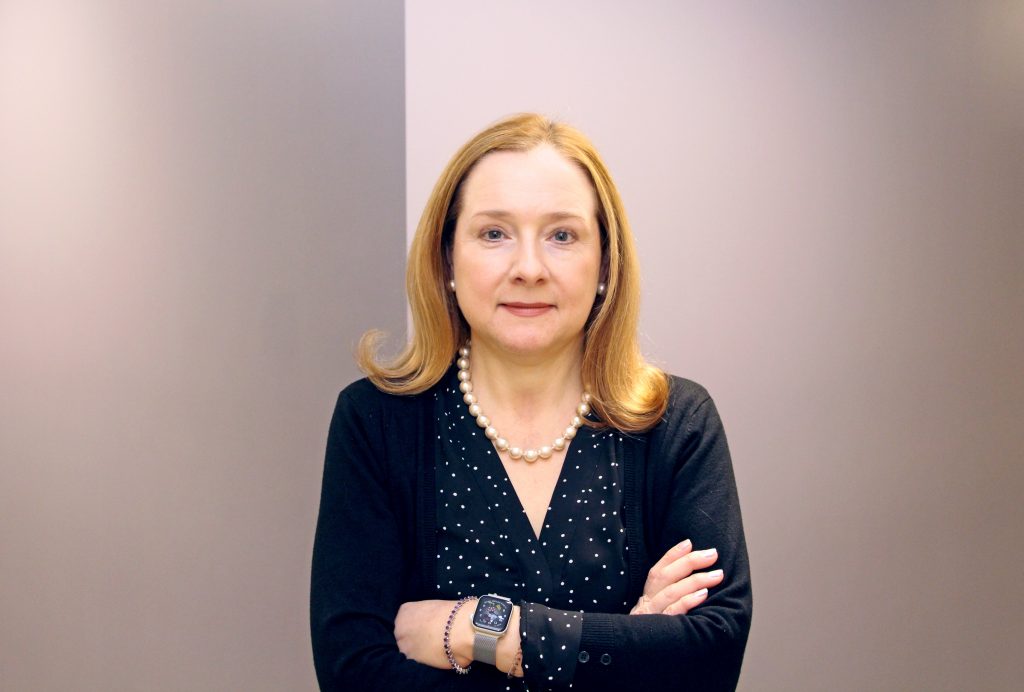The Logistics of a Pandemic
by Matt Prokopchuk
 Anne-Marie Heron is the hospital’s executive director of capital planning and operations, overseeing the running of the hospital site and facilities, capital projects, and the procurement of supplies.
Anne-Marie Heron is the hospital’s executive director of capital planning and operations, overseeing the running of the hospital site and facilities, capital projects, and the procurement of supplies.Q&A with Thunder Bay Regional Health Sciences Centre’s Anne-Marie Heron
(Originally published in the February 2021 edition of The Walleye Magazine)
The COVID-19 pandemic has changed many facets of our work lives, and that certainly holds true for those at the Thunder Bay Regional Health Sciences Centre. Anne-Marie Heron is the hospital’s executive director of capital planning and operations, overseeing the running of the hospital site and facilities, capital projects, and the procurement of supplies. During the pandemic, she’s also on the hospital’s COVID incident management team, where she heads the logistics section. We spoke with Heron about how the health sciences centre has adapted to the new normal and its role in handling the first round of vaccinations.
The Walleye: What sorts of changes have you implemented at the hospital since the start of the pandemic?
Anne-Marie Heron: One—just thinking as we’re coming in the front door—there’s certainly a lot of signage to help direct people and provide education around screening and PPE [personal protective equipment], so that’s been one area that the capital group has had to address. Once you come through the door, [there are] all the new screening booths that are set up, the plexiglass that’s everywhere— that’s been another key issue—all of the physical distancing markers, signage, etc. From the maintenance physical plant group, they’ve looked a lot at the HVAC systems, air flow, isolation areas, and enhanced that so that we can ensure that the health care practitioners have even enhanced spaces in order to perform some of the work required that’s invasive on people, just to ensure we can minimize any potential for spread.
TW: Has the hospital been able to maintain its supplies of PPE and other essentials?
AMH: In the spring, it was certainly—worldwide it was certainly a tighter supply. The hospital did really well in managing its supply as well, so we were quite prudent on how supplies were being used. We had already had certain contracts in place prior, just from normal procurement, which certainly was an asset. So there were a lot of good things that we were able to build on, and then after that, we were also able to work with some of our PPE suppliers who were able to get additional allocations, so that we could then get additional allocations from them. There were days that I was concerned that we didn’t have—we weren’t flush with supplies, but we actually did quite well. We never really ran down to the wire on anything, but that was a lot of hard work by a lot of people, staying up on anything that’s available, following up on all leads that might be available. So overall, I would say actually we did quite well on PPE supplies. [In the] current state, things are in a very good state because worldwide, suppliers have been able to ramp up and there is a lot more supply available. So I don’t have really any concerns now around supplies.
TW: What adaptations has the hospital made to accept the COVID-19 vaccine?
AMH: First of all, when there was all the new swabbing that started, logistics was heavily involved in setting up that space, outfitting it, getting all the supplies in place, getting people into place. Now that the priority is switching to vaccination, we were heavily involved in updating the space to meet the vaccination needs; we’re also looking for additional space so that we can grow the capacity for the hospital to vaccinate. We were heavily involved in working with the [Ministry of Health and Long-Term Care] to receive the [refrigeration] equipment. We’ve also been procuring some additional items, just proactively, to ensure that we have additional refrigeration capacity, and our facilities group has been making sure [everything’s] set up on backup power and monitored. So we’ve been heavily involved in that.
TW: How has dealing with the pandemic changed how you think about doing your job?
AMH: I think focusing on, say, starting with supply chains, I think the things that we were doing prior to the pandemic to sort of shore up and solidify our supply chain processes certainly was beneficial and that’s just [been] reemphasized through this COVID situation. The whole base and design of the hospital certainly becomes something that you think about when you’re in a pandemic, because [when developing] some of these unique spaces [some were] easier than others. So I think that design going forward will be something interesting to continue to consider, and where we are evolving around HVAC standards and infection control standards.